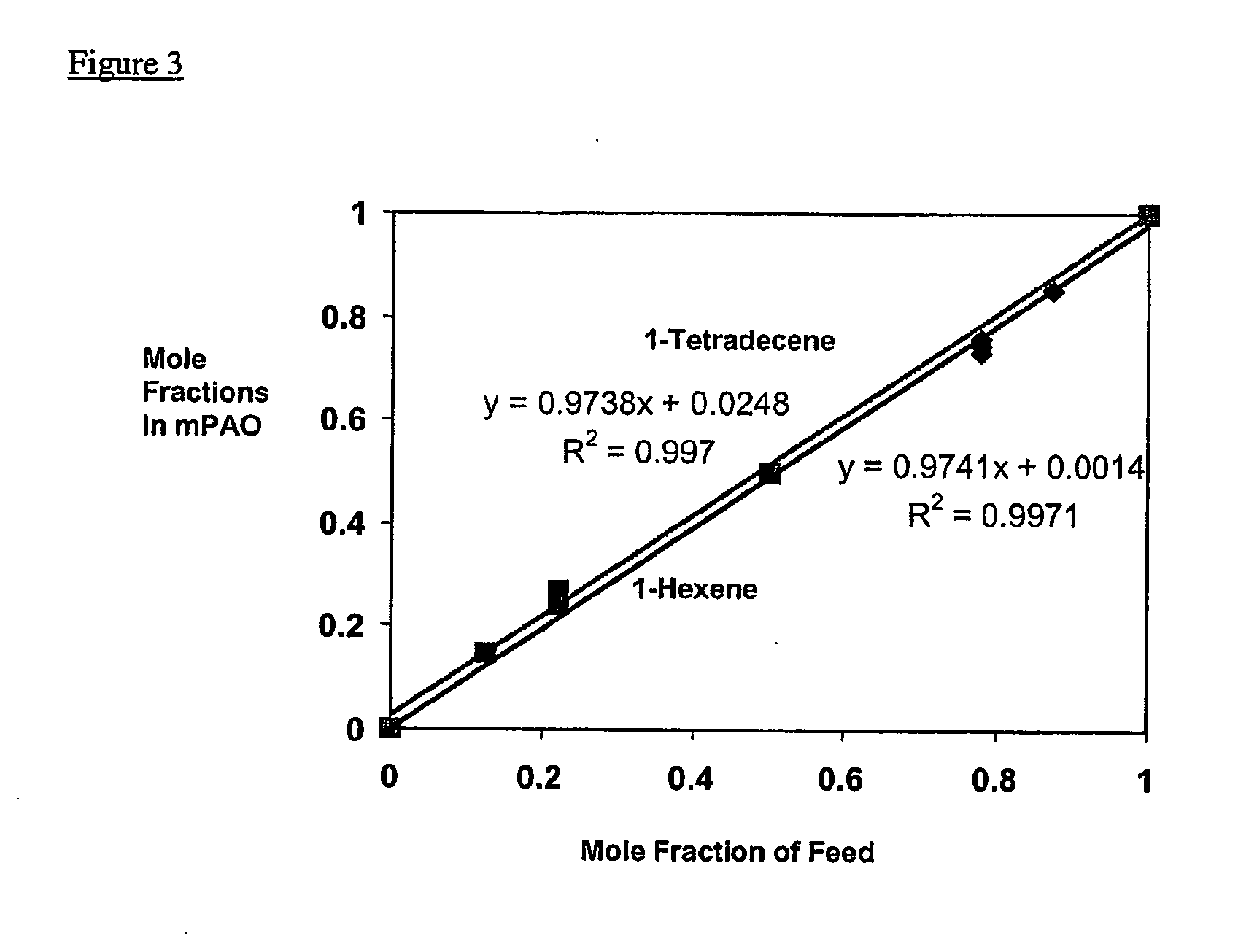Lubricants from Mixed Alpha-Olefin Feeds
a technology of mixed alpha-olefin and lubricants, which is applied in the field of lubricant compositions, can solve the problems of affecting product vi and low temperature properties, generating polymers of very high molecular weight, and prone to blockage or inhomogeneity of copolymers, etc., and achieves excellent vi, low temperature viscometrics, and good vi.
- Summary
- Abstract
- Description
- Claims
- Application Information
AI Technical Summary
Benefits of technology
Problems solved by technology
Method used
Image
Examples
example 1
[0168]An olefin mixture containing 18.4% 1-hexene, 22.3% 1-octene, 21.6% 1-decene, 16.8% 1-dodecene, 10.4% 1-tetradecene, 6.4% 1-hexadecene and 4% 1-octadecene was used as feed. This composition is similar to the linear alpha-olefins produced from a typical LAO plant. 30 grams of this olefin mixture and 0.522 gram of a toluene solution containing 20 mg of triisobutylaluminum (TIBA) / g of toluene were charged into a reactor. A catalyst solution containing 11 grams toluene, 0.0133 grams TIBA stock solution, 0.30798 mg rac-dimethylsilylbis(tetrahydroindenyl)zirconium dichloride (A) and 0.5408 mg N,N-dimethylanilinium tetrakis(pentafluorophenyl)borate (B) was added to the reactor with stirring while maintaining a temperature of 30° C. After 19 hours reaction time, the reaction was terminated by addition of 3 ml isopropanol, followed by washing with 120 ml 5% sodium hydroxide solution in water. The isolated organic layer was distilled at 160° C. / 1 millitorr vacuum for two hours to remove ...
example 2
[0169]Similar to Example 1, except a metallocene containing 70% meso- and 30% racemic-dimethylsilylbis(tetrahydroindenyl) zirconium dichloride (C) was used in the preparation.
example 3
[0170]Similar to Example 1, except the reaction was carried out at 60° C.
PUM
| Property | Measurement | Unit |
|---|---|---|
| Temperature | aaaaa | aaaaa |
| Temperature | aaaaa | aaaaa |
| Temperature | aaaaa | aaaaa |
Abstract
Description
Claims
Application Information
 Login to View More
Login to View More - R&D
- Intellectual Property
- Life Sciences
- Materials
- Tech Scout
- Unparalleled Data Quality
- Higher Quality Content
- 60% Fewer Hallucinations
Browse by: Latest US Patents, China's latest patents, Technical Efficacy Thesaurus, Application Domain, Technology Topic, Popular Technical Reports.
© 2025 PatSnap. All rights reserved.Legal|Privacy policy|Modern Slavery Act Transparency Statement|Sitemap|About US| Contact US: help@patsnap.com



